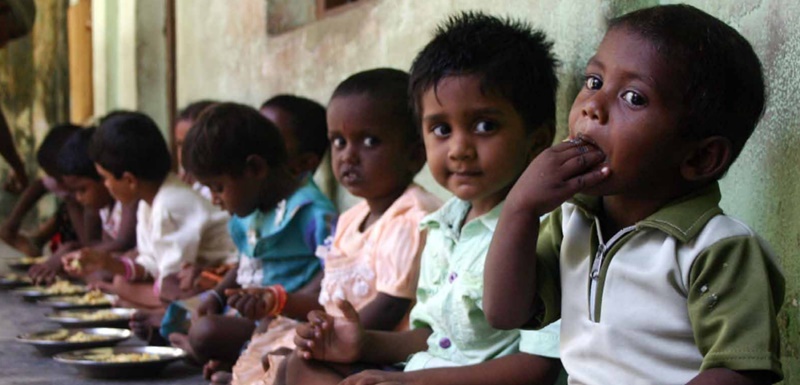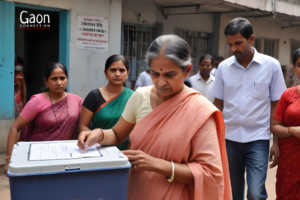Rural India’s much awaited report card on its healthcare sector is out. The National Family Health Survey-5 (2020-21) of the Union ministry of health and family welfare shows a slight improvement in nutrition indicators of under-5 children — stunting, wasting and underweight category kids have reduced.
However, there has been an increase in anaemia among under-5 children in rural India. A child who has anaemia does not have enough red blood cells or haemoglobin. Haemoglobin is a type of protein that allows red blood cells to carry oxygen to other cells in the body.
In rural India, 68.3 per cent of children in the age group of 6-59 months were found to be anaemic in 2020-21. This is an increase of 15 per cent in the past five years. During 2015-16 when the previous NFHS-4 was conducted, 59.5 per cent of children were found to be anaemic.
The Phase II data of NFHS-5 for India, and 14 states and Union Territories was released today on November 24, by Vinod Kumar Paul, member (Health), NITI Aayog and Rajesh Bhushan, secretary, Union Ministry of Health and Family Welfare.
The statewise data shows 72.7 per cent under-5 kids in rural Madhya Pradesh are anaemic. This is followed by Rajasthan (72.4 per cent), Haryana (71.5 per cent), Punjab (71.1 per cent), and Jharkhand (67.9 per cent).
As per Phase I data of NFHS5, 81.2 per cent, 73.5 per cent, 72.8 per cent of children between 6-59 months in Gujarat, Jammu & Kashmir, Telangana are anaemic.
As per the Phase II data of NFHS5, 81.7 per cent of rural children in NCT Delhi and 76.8 per cent in Dadra & Nagar Haveli and Daman & Diu were found to be anaemic in 2020-21.
In Chhattisgarh, anaemia for rural children between 6-59 months has increased from 41.2 per cent in NFHS-4 to 66.2 per cent in NFHS-5. This is an increase of 60 per cent in under-5 rural children between 2015-16 and 2020-21 in the state. In Tamil Nadu, anaemia has increased from 52.5 per cent in NFHS-4 to 60.4 per cent in NFHS-5.
Similarly, for Odisha, it has increased from 45.7 per cent to 65.6 per cent in the same time period. This is a 44 per cent increase in anaemia levels in the rural kids of the state.
Slight improvement in nutrition indicators
Child nutrition indicators show a slight improvement in rural India. At national level, stunting (height-for-age) has declined from 41.2 per cent to 37.3 per cent, wasting from 21.5 per cent to 19.5 per cent, and underweight from 38.3 per cent to 33.8 per cent in rural India.
In the phase-II report, all 14 states and UTs have shown an improvement in child nutrition indicators. “… but the change is not significant as drastic changes in respect of these indicators are unlikely in a short span period,” read the press statement issued by the health ministry dated November 24.
Stunting, which is defined as low height-for-age, has decreased for most of the states. For Rajasthan, stunting has decreased from 40.8 per cent in NFHS-4 to 32.6 per cent in NFHS-5. Similarly, for Uttar Pradesh, stunting in under-5 kids has decreased from 48.5 per cent to 41.3 per cent in the same time period.
“This slight improvement is not at all an indication of improvement. If we are ensuring food security and livelihood along with safe water and environment then all indicators should improve,” Amulya Nidhi, member, Jan Swasthya Abhiyan, Madhya Pradesh told Gaon Connection.
“The health indicators should be seen in totality. The definition of health itself says physical, mental and social well being and absence of any disease. The indicator of anaemia, malnutrition, non communicative disease, tuberculosis, malaria, diarrhoea like diseases still exist in many parts of our country,” the public health activist added.
Meanwhile, the latest data on NFHS-5 shows Jharkhand has 42.3 per cent of under-5 rural children who are stunted. This is followed by Uttar Pradesh (41.3 per cent), Madhya Pradesh (37.3 per cent), Chhattisgarh (35.7 per cent), Rajasthan (32.6 per cent).
Gaon Connection has focused on ten states — Uttar Pradesh, Madhya Pradesh, Rajasthan, Punjab, Haryana, Chhattisgarh, Odisha, Jharkhand, Arunachal Pradesh, Tamil Nadu — and studied their malnutrition and anaemia indicators both as per the NFHS-4 and NFHS-5.



















